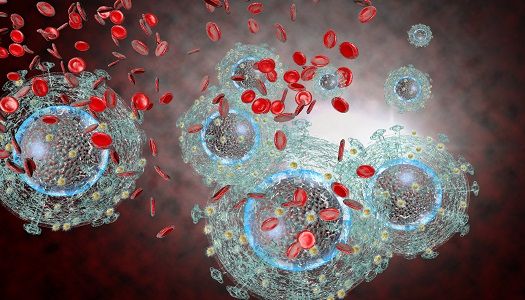Article
Why HIV Drugs Act (or Don't) to Boost Each Other's Effectiveness
Author(s):
Co-receptor agonists and fusion inhibitors are designed to have a synergized function. Why doesn't it always happen?

Drugs that target the HIV virus are often used together to increase their effectiveness in a relationship known as synergy.
Now researchers at Thomas Jefferson University in Philadelphia say they have discovered possible reasons why these drug combinations sometimes are synergistic and at other times aren’t.
The team, led by Michael Root, MD, PhD, an associate professor of biochemistry and molecular biology, studied second-line HIV drugs. The drugs — co-receptor antagonists and fusion inhibitors — are used after initial HIV treatments fail. They target different steps in the process by which the virus enters human T-cells.
Researchers have predicted that these 2 drug classes will be synergistic in fighting HIV. However, previous studies have shown that’s not always the case.
Root and his team didn’t initially set out to explore synergy.
“This project was originally undertaken to dissect some of the steps of HIV-1 entry,” Root told MD Magazine. “It turned out that the results also shed light on a disagreement in the literature on whether the two classes of drugs worked synergistically or not.”
Root and Koree Ahn, PhD, a former graduate student in Root’s lab, applied different doses of co-receptor antagonist maraviroc (Selzentry) and fusion inhibitor enfuvirtide (Fuzeon) to cells and viruses with slightly different genetic sequences.
Maraviroc binds to receptors on host cells known as co-receptors, while enfuvirtide binds to a viral protein called gp41, the researchers said.
“Using in vitro viral infectivity assays, we tracked how the potency of one inhibitor varied when the other inhibitor was present or not,” said Ahn, who will soon become a postdoctoral fellow at Northwestern University.
Root said his lab has had a longstanding interest in how viruses invade cells and developed a model of inhibition several years ago.
“The model allowed us to measure how one drug altered dynamic properties of HIV-1 entry, thereby influencing the potency of the second drug,” Root said.
The researchers identified several factors that determine the drugs’ level of synergy. The first is the strength of the bond between enfuvirtide and gp41. If enfuvirtide bound to the gp41 protein very tightly, then enfuvirtide and maraviroc acted synergistically, the team found. Weaker binding, however, reduced the synergy between the drugs.
The density of co-receptors on host cells also played a role in synergy. Patients with high levels of receptors may see robust synergy between the 2 classes of drugs, while those with lower levels of receptors may have less synergy or none at all, the research concluded.
How might these findings be implemented in real-life?
The study suggests that variation in viruses and in patients need to be considered when predicting the efficacy of drug combinations, including newly developed co-receptor antagonists and fusion inhibitors, the researchers said.
“For patients that might benefit from these second-line therapies, the viral and cellular properties could be checked before combined administration of these drugs,” Root said. “The results also indicate how one class of drugs (represented by enfuvirtide) might be improved to maintain synergistic activity.”
The team is now focusing its synergy studies on other types of viral entry inhibitors and neutralizing antibodies, none of which are clinically approved for use, Root said.
“These combinations allow us to dissect additional steps in the HIV-1 entry pathway,” Root said.
However, Root doesn’t anticipate that entry inhibitors will act synergistically with reverse-transcriptase inhibitors, protease inhibitors or integrase inhibitors.
“These drugs act on viral steps that occur once the entry process is over and the viral contents have been deposited in the cytoplasm,” Root said.
The paper will be published in the Journal of Biological Chemistry.
A press release regarding the study was made available.





